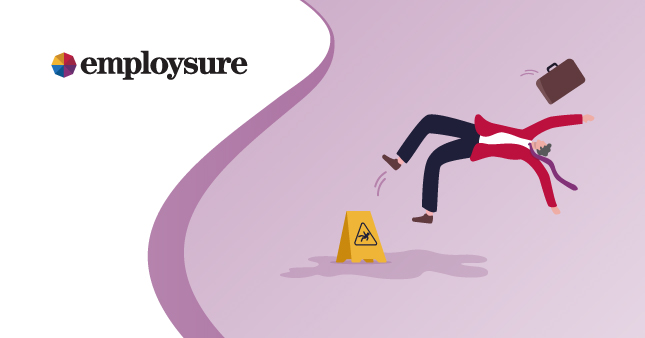
Managing Workplace Health And Safety
Good workplace health and safety standards always start with the people at the top. Directors and board members have collective and individual responsibility for health and safety, no matter how big or small your business. Their role in ensuring health and safety is vital for good governance, staff morale and business success. Workplace health and safety laws place responsibility for health and safety, and risk management, on the people in charge of the workplace. With high standards of health and safety, you will see benefits to your business and also protect it from any bad publicity or employee unrest that would follow a serious accident or prosecution. Research shows that managing health and safety at work effectively is good business practice. Just some of the benefits of robust health and safety practices include:
increased productivity when following safe operating procedures
reduced insurance premiums
fewer absences for sickness
better employee retention and morale
reduced costs of training replacement employees
Download our FREE Work Health and Safety e-Guide
What Is A Risk?
A risk in the workplace is defined as the probability of harm that may result from exposure to a hazard. Some examples of workplace risks include a noisy work environment, unacceptable behaviour from a co-worker, a slip hazard, or faulty electrical equipment. It is your duty as an employer to provide a safe working environment for all workers by identifying and managing risks in the workplace. The first step to preventing accidents in the workplace is to identify hazards wherever work is performed. Next, conduct a thorough risk assessment of potential problem areas in your workplace. This may include improperly stored goods, faulty electrical wiring or cables, leaking drainage pipes, slippery areas on the floor, and the general conduct of employees. Once you identify each type of risk, determine how serious the problem is, and allocate the necessary resources to resolve the issue.
Types Of Risk Assessments
There are two types of risk assessments. The first type is qualitative, where the probability of risk is based on known information in regards to the applied circumstances. And the second type is quantitative, where the probability of risk is more subjective and based on personal judgement backed by general risk data. Generally speaking, qualitative risk assessments are more accurate and serve as solid legal evidence. But if the team is limited to just personal judgement and general risk data, you can still use this data to perform the risk assessment and put in place control measures to improve workplace safety. No matter which approach you use, have a risk management policy and procedure in your workplace, ideally in the company handbook. This policy should clearly set out the process the company will follow to manage workplace health and safety. It should also tell employees how to report hazards in the workplace and what to do in the event of an injury. It is also crucial to cover working from home health and safety, with risk controls for remote workers specifically.
How To Identify Hazards In The Workplace
Whether you suspect there is a risk in the workplace, or you have been notified of a risk by an employee, you must address the problem quickly to prevent the risk of injury. A visual inspection of the area is one of the most effective ways to identify a risk. If the risk is related to a work-related task, you may need an employee to explain or demonstrate to you – in a safe and controlled manner – what the risk is, and why it needs to be resolved. If the hazard involves a piece of electrical equipment, arrange a licensed electrician to inspect the worksite so they can assess the problem and suggest to you that the equipment be repaired or replaced. When assessing potential risks in the workplace, take into account the following factors to determine the best course of action:
How serious is the risk? (e.g. potential types of injuries, seriousness of each injury)
What current control measures are in place? How effective are they?
What actions can you take to reduce the level of risk?
How urgent is it to manage these particular risks?
Types Of Risk Control Measures
How you resolve a work-related risk will depend on the nature of the problem itself. While it is not always possible to remove all risks in the workplace, there are steps you can take to limit the duration of time a worker is in a hazardous place. Or you can make adjustments to how an employee performs a certain task to reduce the level of risk. Some good example of risk management control measures include:
Give employees longer rest breaks or shortening the length of each shift
Move the location of a work process to an area that is less crowded
Change how a work process is performed to reduce the risk of injury
Provide employees who are most at-risk with additional onsite training and support
Provide clear signage to make employees are aware of risks in the area
Reward employees with bonuses or incentives for being able to implement safe work practices into their daily routine.
Set in place an emergency drill to improve response times
For peace of mind, please call our 24-hour Advice Line now on 1300 651 415.









